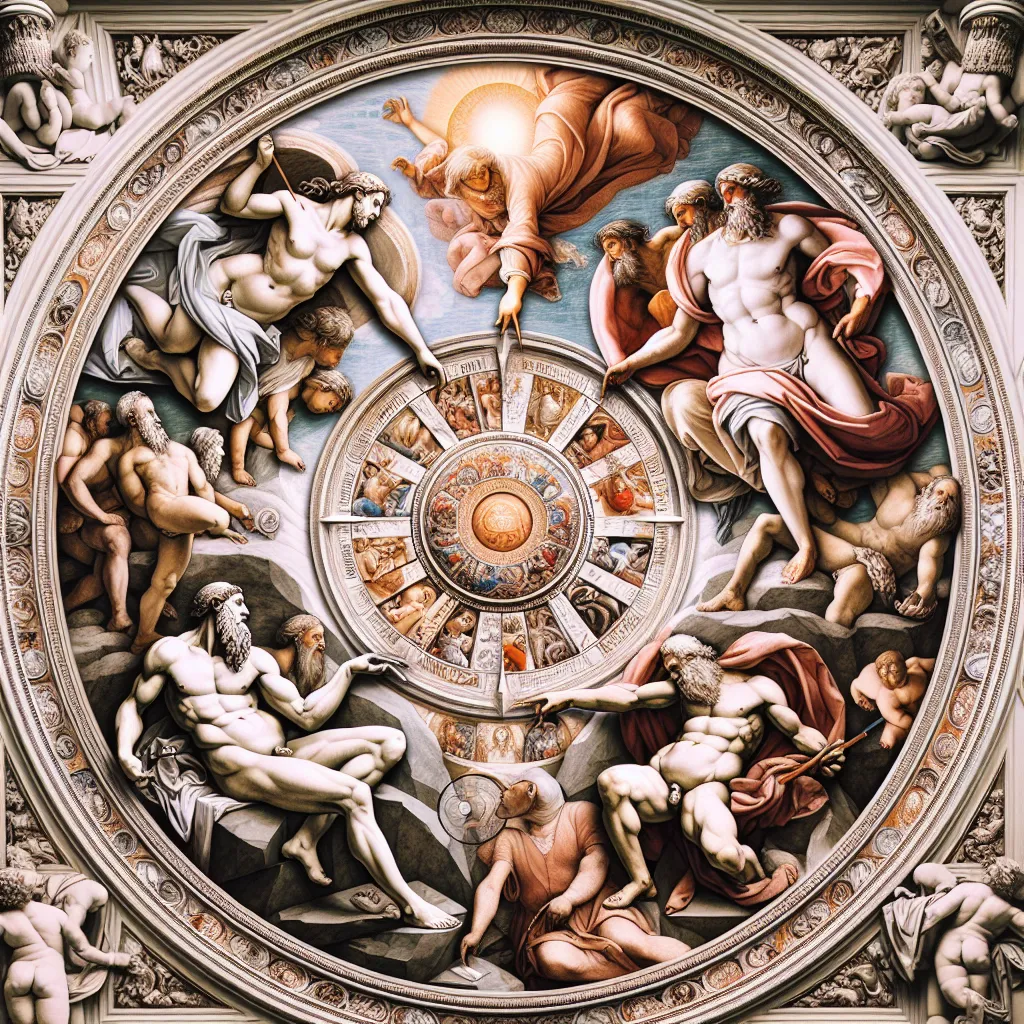
- Published on
- Authors

- Name
- You
The Gnostic Interpretation of the Old Testament
The Old Testament, a foundational text for millions, is steeped in ancient wisdom and tradition. However, for the Gnostics, it isn't just a series of religious stories; it is a tapestry of hidden truths and cosmic mysteries. Central to Gnostic thought is the concept of the Demiurge, often identified with Yahweh, the Old Testament God. This article aims to unveil the Gnostic reinterpretation of these ancient narratives and figures, bridging them with contemporary scientific concepts for a truly transformative understanding.
The Demiurge: Creator or Deceiver?
In traditional Judeo-Christian theology, Yahweh is seen as the omnipotent and benevolent creator of the universe. However, the Gnostics had a radically different interpretation. According to Gnostic texts, the Demiurge is a lower deity, a craftsman who shaped the material world but lacks true, divine wisdom.
Key Characteristics of the Demiurge:
| Characteristic | Yahweh (Traditional) | Demiurge (Gnostic) |
|---|---|---|
| Nature | All-knowing and all-good | Ignorant and flawed |
| Relationship to Humanity | Protector and law-giver | Oppressor and deceiver |
| Goal | To lead towards salvation | To entrap in materiality |
Gnosticism: Knowledge and Liberation
Gnosticism, derived from the Greek word "gnosis" (knowledge), is centered on the idea of profound, mystical knowledge as the path to enlightenment and liberation. This knowledge is not merely intellectual but deeply experiential, involving an awakening to divine truths.
The Duality of Worlds:
Gnostics often spoke of two realms:
- The Pleroma: The fullness of divine light, perfection, and spiritual truth.
- The Kenoma: The realm of emptiness, shadow, and material illusion dominated by the Demiurge.
Wisdom Tradition
Within Gnostic thought, Sophia (Wisdom) plays a pivotal role. She represents both the divine spark within humanity and the force of awakening that challenges the Demiurge's dominion.
Quantum Mechanics and Gnostic Thought
Interestingly, some parallels can be drawn between Gnostic and modern scientific perspectives, particularly quantum mechanics. Both challenge the surface-level reality and delve into the deeper, often paradoxical layers of existence.
The Quantum Realm and the Pleroma
Just as Gnostics posited the existence of a higher, more truthful realm (the Pleroma), quantum mechanics reveals a world far beyond our everyday perception. Subatomic particles exist in states of superposition, entanglement, and potentiality, defying classical logic.
| Concept | Gnostic Thought | Quantum Mechanics |
|---|---|---|
| Higher Realm | The Pleroma | The Quantum Field |
| Nature of Reality | Illusory material world vs. spiritual truth | Particle-wave duality, probability |
| Liberation | Gnosis (spiritual knowledge) | Observation and understanding of quantum states |
Reinterpreting Old Testament Stories
Let's delve into specific Old Testament narratives through the Gnostic lens.
The Garden of Eden
In traditional scripture, the Garden of Eden is a paradise lost due to human disobedience. In Gnosticism, however, the story takes on a radically different tone.
- Adam and Eve: Far from being sinners, Adam and Eve are seen as figures of enlightenment, attempting to break free from the ignorance imposed by the Demiurge.
- The Serpent: Rather than a tempter, the serpent is a symbol of Sophia, imparting forbidden knowledge that awakens Adam and Eve to their divine potential.
The Flood
In orthodox interpretation, the Flood is a divine judgment. Through Gnostic eyes, it represents the Demiurge's attempt to suppress the growth of human gnosis.
| Element | Traditional View | Gnostic Interpretation |
|---|---|---|
| Reason for the Flood | Humanity's wickedness | The Demiurge's fear of awakening |
| Noah | Righteous man chosen by God | The initiate preserving divine knowledge |
Bridging Ancient Wisdom and Modern Science
Our journey through Gnostic interpretations and modern scientific insights provides a panoramic view of reality that is both mystical and empirical. The reimagination of Yahweh as the Demiurge invites us to question and explore deeper truths beyond conventional narratives, while quantum mechanics challenges our fundamental assumptions about the universe.
Embrace the synthesis of these ancient and modern paradigms, and let it illuminate your path to deeper understanding. As within, so without; as above, so below.
In the dance of light and shadow, may you find your way to the Pleroma.
